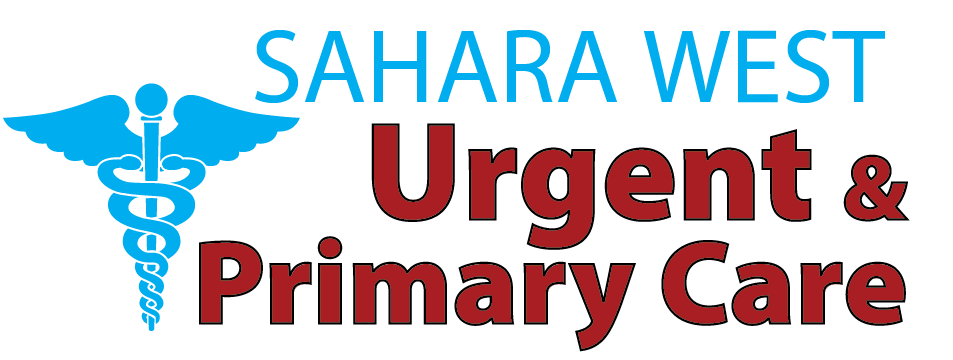The urgently needed solution is called an urgent care center, which involves a walk-in, no-appointment-needed visit for non-life-threatening problems of an urgent nature. They are quicker and less expensive than emergency rooms and more available in the short term than an appointment with a primary care physician. They are usually supplied with on-site laboratories or X-rays, and a mixture of convenience, speed, and low costs, and they are perfect in case of emergencies or health problems that you do not want to say that you ignore.
Viral Respiratory Illnesses and Why They Matter
Common colds and flu, COVID-19, and bronchitis are common viral infections that cause urgent care visits. The conditions usually appear at a similar time of fever, cough, nasal congestion, sore throat, and fatigue. Urgent care services will be able to offer quick test diagnoses, such as rapid flu swabs or COVID-19 antigen/PCR, and offer advice on how to manage the symptoms, use antivirals, and do home isolation. Early care will assist you to get well and minimize the spread in your home.
Bacterial Infections Demanding Prompt Treatment
Sinusitis, strep throat, ear infections, and UTIs may easily get worse in case of improper treatment. The tools applied by urgent care centers in diagnosing infections include throat and ear swabs, urinalysis, and culture. This allows one to write antibiotics on the same day without complicating these types of diseases like sinus abscesses or rheumatic fever (from untreated strep), kidney damage caused by untreated UTIs, or permanent ear damage. The discomfort is also truncated at an early stage, and the recurring visits to the clinic are excluded.
Ear, Nose & Throat Complaints Addressed on the Spot
Earaches, tonsillitis, and mild bronchitis may bring much pain and disruption of everyday life. Such urgent care providers rely on otoscopes and visual observations to seek signs of inflammation or clogging of ears, sore tonsils, or a relentless cough. They can prescribe antibiotics, painkillers, inhalers, or inhalation treatment, which may provide quick, specific relief. Children, in particular, find it helpful to stop their activities and sleeping patterns quickly given the correct diagnosis.
Gastrointestinal Distress Handled Quickly
Nausea, vomiting, diarrhea, or stomach cramps without notice could indicate food poisoning or gastroenteritis. Urgent care centers provide stabilization of patients by administering antiemetic drugs, fluids (oral or IV), and electrolytes. To exclude the serious conditions, they evaluate the presence of the signs of dehydration, blood in stool, or fever. You will be provided with personal dietary recommendations and prevented from such problems as severe dehydration, especially in children and elderly people, with the help of experienced guidance.
Minor Injuries and Wound Care That Doesn’t Wait
At urgent care, sprains, strains, burns, lacerations, and minor fractures can be addressed effectively. In many cases, X-rays are provided to examine the presence of fractures, and wounds can be washed, sutured, glued, and bandaged immediately. The providers also use a sling or splints and recommend the elevation of the injury and subsequent care. Active treatment soothes the pain and makes one less prone to be infected, plus accelerates the process of recovery
Skin Conditions Needing Action Now
Urgent care covers a variety of skin-related conditions, such as rashes and eczema eruptions, as well as cellulitis and mild allergies. Doctors determine the cause of symptoms, whether it is an allergy, a fungus, a virus, or bacteria. They can offer topical steroids, oral antihistamines, antifungals, or antibiotics. Early management assists in reducing itchiness, skin breakdowns, and hospitalization.
Eye Problems Needing Immediate Attention
Eye conditions such as conjunctivitis, scratches in the cornea, or foreign bodies require prompt treatment so as to avoid any harm to the eyes. Urgent care physicians or specialists can correctly determine whether the infection is viral or bacterial and provide the patient with antibiotic drops when necessary. Fluorescein dye is one of the tools used in identifying any scratches on the corneas, and forceps used under the scope remove the debris. Care enforced early reduces pain and protects your vision.
Pediatric Illnesses Parents Shouldn’t Delay
Urgent care facilities provide friendly, effective treatment of children with respiratory syncytial virus (RSV), bronchiolitis, hand, foot, and mouth disease, as well as fevers. The staff are trained to comfort the young patients and check oxygen levels in addition to using gentle treatment. Parents also want a rapid test to check for flu, RSV, and strep so they can prevent prolonged illness and make better-informed choices on whether to go to school or childcare.
On‑Site Diagnostics for Fast, Accurate Care
The characteristics of urgent care centers are the presence of lab tests, rapid antigen testing, and X-ray imaging on the same visit. There are no referrals, no waiting, and flu, strep, and COVID results average 10 minutes. Portable X-ray machines allow eliminating the cases of fractures or pneumonia in seconds. These instruments are used to diagnose the diseases correctly without referring you to other facilities.
Treatment Plans That Come With You
Once diagnosed, clinicians advise individual treatment regimes such as prescribing treatment, antibiotics, inhalers, or dressings. You will get an obvious explanation of how to treat at home, how to identify the red flags (high temperature or chest pain are among them), and recommendations regarding follow-up (either urgent care, a visit with your family physician, or the emergency department). This will result in continuity of care rather than a sudden hand-off.
When Conditions Exceed Urgent Care Level
Although urgent care can treat most illnesses, others need care on an ER level: chest pains, signs of a stroke, head trauma, uncontrolled bleeding, severe burns, or sepsis indicators. Pregnant, immunocompromised people and infants less than a month old are likely to be referred to the emergency department by these facilities. Being aware of these boundaries will make you safe and also allow you to receive the kind of care you require.
Insurance, Cost Transparency, and Ease of Access
As compared to the ER visits, urgent care visits are, in most instances, more affordable even to uninsured patients. The majority of the clinics accept the largest insurance plans with copays that one can handle. To those who are uninsured, quotes are commonly given on an upfront basis. Designed to accommodate sudden problems, urgent care centers are open weekends and in the evenings and provide a viable solution to busy ERs whose waitlists might take a week.
Why Urgent Care Centers Continue to Grow
Their fast pace, access, and value are what make urgent care an increasingly popular option. Patient needs are addressed by 24-hour availability, easy accessibility, telehealth, and on-site diagnostics in instances where primary care may not be available. With the changing healthcare systems, urgent care addresses emergency room congestion and improves local healthcare provision, particularly in underserved communities, in addition to providing innovative hybrid care (e.g., tele-urgent care).
Practical Advice for Your Next Visit
You should take your ID, insurance card, and the list of current medications before going to urgent care. Standby time is likely to take 15-30 minutes, considering the flow of the patients. Should the symptoms evolve, such as to increase the fever, increase the pain or develop signs of worry, do not hesitate to upgrade to ER care. Being updated implies the correct care at the correct moment.
Conclusion
Urgent care in Las Vegas has an untapped resource. Whether they are respiratory, gastrointestinal, skin, injury-related, or pediatric, they respond to urgent, yet not emergent, healthcare needs efficiently. They are a balance of access, quality, and price with on-site diagnostics and extensive treatment plans. When you determine strongly whether a symptom requires urgent care or not, next time it is quite likely that urgent care will be your remedy. To schedule your appointment with the highest standard of care, visit Sahara West Urgent Care on our website, where you can also explore more informative blogs.
FAQs
How quickly will I be seen in urgent care?
Most patients are evaluated within 15–30 minutes, though wait times vary with demand and case complexity.
Can urgent care prescribe medicine for infections?
Absolutely—antibiotics, antivirals, inhalers, pain relief, and topical treatments are all within their scope.
Is urgent care cheaper than the ER?
Generally, yes. Urgent care copays are lower than ER fees, and uninsured patients often pay less for non-critical treatments.
How do I know if my symptoms need ER care?
Visit the ER if you experience chest pain, sudden weakness or numbness, uncontrolled bleeding, head injury, or breathing difficulty.
Do urgent care clinics offer pediatric equipment?
Yes—they often have child-sized diagnostic tools, pediatric-trained staff, and a comforting environment designed for children.





